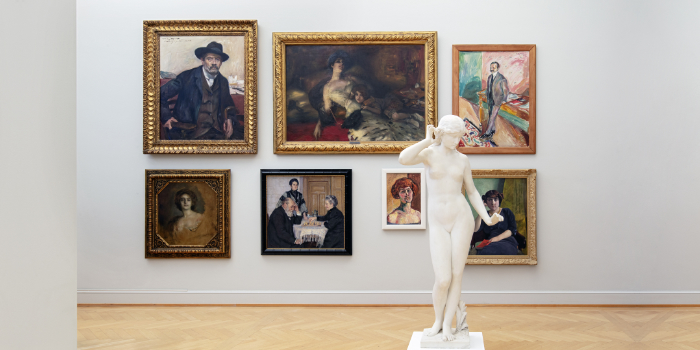
Collection Fever
From 26 August 2023, Kunstmuseum St.Gallen
With Collection Fever, Kunstmuseum St. Gallen launches a new presentation of its extensive holdings, which span more than five centuries. The exhibition highlights the unique background to this museum; its origins in the 800-year history of textile production, the private collections assembled, and the influence of the art market. The artworks are presented as part of a timeline that follows the chronology of the different textiles produced in St. Gallen over the centuries—from linen and cotton to lace.
Curated by Melanie Bühler, Dorothee Haarer, Gianni Jetzer and Lorenz Wiederkehr
The exhibition opens with a newly-commissioned work by artist Mathias C. Pfund (b. 1992). His work focuses on the first object to enter the collection of the city of St. Gallen: the crocodile donated to the Abbey Library St. Gall by merchant Daniel Studer in 1623. The installation is comprised of a hanging structure (similar to those used to display such crocodiles in museums, but in Pfund’s work the structure is empty), an engraving of a dead Nile crocodile by Carel van Mallery from the 16th century, and a collage of a 2nd-century mosaic, showing the remains of a lavish banquet scattered on the floor. Pfund’s installation is about luxury and exoticism, and he poses the question of which objects we consider valuable and how these values live on in the museum context.
The title of the exhibition, Collection Fever, is derived from Archive Fever, the 1995 essay by Algerian-Frenchphilosopher Jacques Derrida. In this text, Derrida defines fever as the opposing principle to order — ordering being traditionally associated with the concepts of “collecting” and “archiving”. At the same time, according to the philosopher, it is only through fever — underlying curiosity, tracking, and accumulation— that collections and archives are created.
It is precisely this feverish energy that has been the guiding principle for Collection Fever. Moreover, to think of collecting as a feverish activity is to acknowledge that it has much to do with accumulating, which then opens the question of how money and prestige are linked with art, and in the case of St. Gallen points to the relationship between textiles and art.
